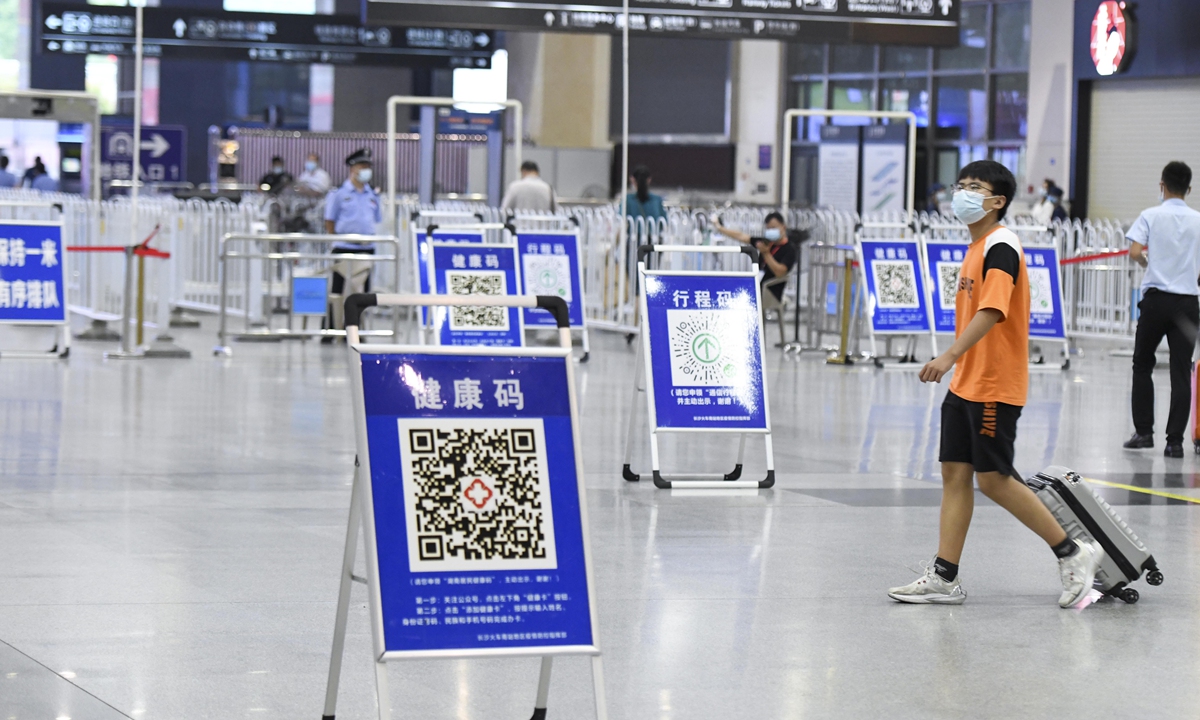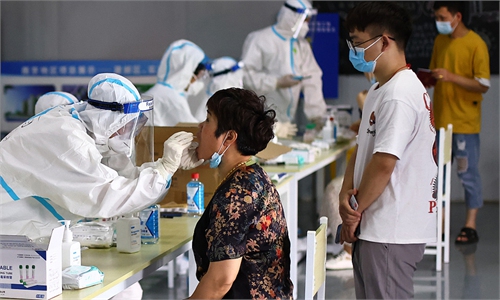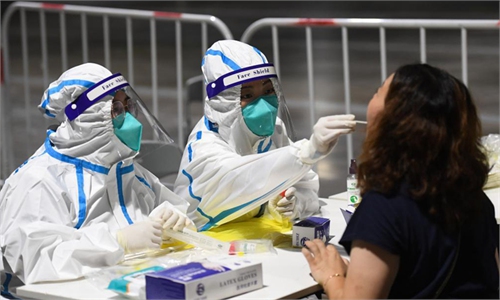Virus resurgence raises urgency of improving epidemic-control efficiency: Global Times editorial

The Changsha railway station in Central China's Hunan Province set up signs for passengers to scan their QR health codes on Friday, as Hunan clamped down after the Nanjing airport outbreak spread to at least 13 cities. Photo: cnsphoto
The control and prevention of the COVID-19 epidemic in China is getting serious. China's National Health Commission updated on Sunday that eight provinces and regions reported new domestically transmitted cases on Saturday. This round of the epidemic has spread from Nanjing Lukou Airport to more regions and a serious infection in the Sixth People's Hospital of Zhengzhou. These are glaring loopholes.China's epidemic control and prevention is one of the strictest. However, no matter how careful, there is always a risk of similar serious flaws in the future. The key to epidemic prevention is to detect vulnerabilities and break chains of transmission in time, and reduce the social cost of each round of epidemic control. It is absolutely worrying if a single flaw can affect many provinces and regions across the country, disrupt national holiday seasons such as Spring Festival or summer vacation, and impact the lives of many people and many service industries. It shows that our systematic progress in fighting the epidemic needs to be strengthened.
China's dynamic approach of vigorously clearing the new cases to fighting COVID-19 has diverged from the "opening up" policy represented by the UK. China's path has the advantage because it is truly humanitarian and has so far produced good economic results. However, it should be noted that the West, with the support of vaccines, is tending to move closer to the British path and may lead more countries to choose to open up with the help of vaccines, forcing them to bear the humanitarian costs.
The British path will continue to be challenged as the virus continues to mutate. If the rate of infection rises again, but the death rate is not effectively curtailed, Britain's path may end half way or falter with painful economic costs.
The challenge for China is to open controllable windows between our closed anti-epidemic system and the turbulent outside world, which can not only guarantee the openness of Chinese society, but also maintain China's capability of dynamically clearing COVID-19 cases. China has been exploring ways to achieve it. In this process, China has accumulated a great deal of experience and has learned lessons from this. What is important is that this exploration must be done in a way that pushes the limits of efficiency. China is now engaged in only a few personnel exchanges with other countries. Once the number of such exchanges rises, we cannot afford the costs such as those involving the cases at Nanjing airport or the Sixth People's Hospital of Zhengzhou.
It has been repeatedly suggested that China may one day be forced to open up and adopt the UK's approach. But this would mean unimaginable social costs and pain. It is almost politically inconceivable that we would need to build the whole society's resilience to COVID-19 from scratch.
The COVID-19 may co-exist with humanity for a long time. Now that China has embarked on the dynamic zero-case route, our best choice is to improve this route and reduce its economic and social costs indefinitely. This means that precise prevention and control should constantly achieve new breakthroughs in science and technology and social organizations.
If the average economic and social cost to correct a serious flaw in epidemic prevention is now 100, then next year we should aim to bring it down to 50, and the year after that - 25, until we bring it down to less than 10. Only under such conditions can we end the outbreak of the virus in a truly humanitarian way, and our strategy to eliminate the virus can be internationally competitive in the long run, because it will help China achieve more comprehensive achievements.
Specifically, China must further improve its approach to COVID-19 testing and make it so much cheaper and more convenient that most social institutions can self-test. As the West opens up, its motivation to do so will diminish. In addition, China's grid-like prevention and control system can quickly determine the exact extent of the outbreak. In this way, we can avoid massive lockdowns in cities and transportation shutdowns, and substantially reduce the time spent to take such extreme measures when necessary. We should strive for lockdowns of no more than two weeks and, in extreme cases, no more than four weeks.
Scientific prevention and control must thoroughly implement the spirit of science, and constantly reduce the cost of rigid uniformity and formalism. China's path has no reference in the world, and we can only compare and compete with ourselves. It is important to understand that in addition to our humanitarian achievements, our ultimate success will include the fact that China will be able to develop faster than the UK and the West that can afford much higher death toll, and that we will clearly outperform them in terms of moral and practical achievements.


